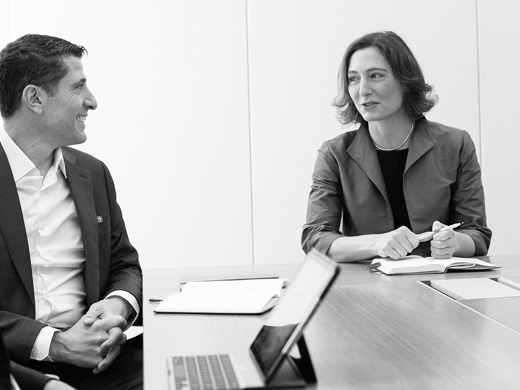The Equity Project: What it is and how it works




The gender gap is an unfortunately stubborn reality of the business of law. Despite the best efforts of law firms, clients and policy makers—not to mention women and men eager for a more equitable world—women are still far less likely than men to be represented at equity partnership and other leadership ranks in law firms. Women still earn less than their male counterparts, and as the most recent research from Major, Lindsey & Africa demonstrates, in the US, the pay gap is actually getting bigger.
Since joining Burford Capital, I’ve seen proof of the gender gap in law in the thousands of matters, worth billions in legal fees, that we review every year for potential financing. Over the course of our first decade, under 10% of these matters have been led by women. That’s a frustratingly low number—and it needs to change.
As one part of the solution, in October 2018, Burford launched The Equity Project to provide an economic incentive to help close the gender gap in law. In this article I’d like to explain what The Equity Project is, how it works and how women lawyers (and law firms and clients that are committed to promoting diversity) can leverage the capital we’ve committed to this initiative.
The Equity Project earmarks $50 million to finance commercial litigation and arbitration led by women. That can mean that a woman litigator is first chair; a women-owned law firm is representing the client; a woman litigator earns origination credit; a woman partner is the client relationship manager; or a woman serves as plaintiffs’ lead counsel or chairs the plaintiffs’ steering committee.
With capital from The Equity Project, we seek to help women overcome obstacles that continue to hold them back by shifting risk to Burford. As with all litigation finance, Burford assumes legal cost and risk—either from the client or from the law firm. This enables law firms to offer their clients attractive terms, to take a strong case from a client that couldn’t otherwise afford the litigation or to expand their contingency practices without taking on the full risk—. It also enables clients to pursue recoveries and to hit their recovery targets without exceeding their litigation budgets—because Burford takes on that risk.
Specifically, women can use the capital to:
As with most of our financing, capital provided via The Equity Project is most likely to be provided as a non-recourse investment, meaning that Burford commits capital up front (e.g., to pay for legal fees and expenses) that returns to Burford only in the event of a successful outcome; Burford assumes all or a portion of the downside risk.
To qualify for Equity Project funding, matters must meet the criteria of “women led” commercial litigation and arbitration as laid out above, as well as meet Burford’s standard investment criteria. And as with our other litigation finance business, matters considered for Equity Project financing will be reviewed as part of our standard diligence and investment analysis, all of which is conducted in-house by our team of more than 50 lawyers in a three-step process:
Burford finances commercial litigation or arbitration matters, including antitrust, securities, fraud, contract, patent and IP, trade secret and other business tort matters, as well as international arbitration.
The best candidates for Equity Project capital, as with any matter financed by Burford, meet the following criteria:
As a general rule, clients, firms and Burford get the best value when the amount requested from us to finance fees and expenses is at least $2 million, and the majority of our investments are significantly larger. That said, we are motivated to back strong women lawyers and women-owned firms with meritorious matters as they build their practices, and therefore we encourage those with somewhat smaller matters to contact us.
Regardless of the amount of capital committed by Burford, the size of any investment must be commensurate with the predicted damages, which must be supported by strong evidence of loss and be sufficient to support the investment, return and allow the client to keep the majority of the litigation proceeds if the case performs as reasonably expected. Although the ratio of investment to expected recovery fluctuates on a case-by-case basis, for an investment of $2 million, the expected damages (excluding punitive or treble damages) should be at least $20 million.
The timeframe to secure litigation finance depends on a variety of factors. We have previously financed cases in a matter of a few days, but as a general rule—if a case is well worked up and information is provided in a timely fashion—the investment process typically takes between four to six weeks from initial case review. Patent matters can take longer to secure, due to the technical validity and infringement diligence that can be required.
You can learn more about Burford’s diligence process here.
Although the Equity Project is still young, we have seen an enormously positive response so far. We have been contacted by a plethora of litigators who have never reached out before and seen a significant amount of interest in accessing the capital. A number of these investments are already in our pipeline.
We encourage women lawyers to reach out to find out more about The Equity Project and how it can directly benefit them. We are also eager to meet with women lawyers and to provide guidance on how to think about building their business, how to talk to clients about legal finance and how Burford and The Equity Project can be of help.